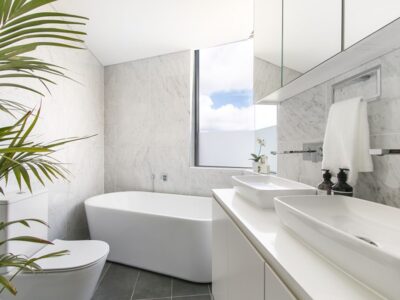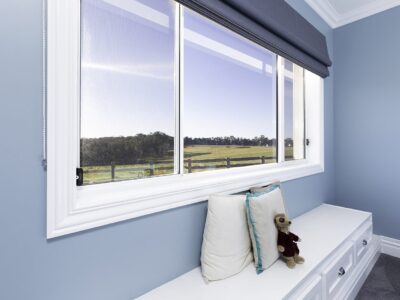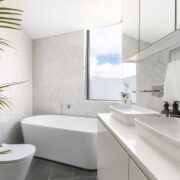
Choosing to give greater consideration to the design of our living spaces and homes is not a superfluous endeavour, and certainly not entirely associated with stylish accomplishments. In fact, the aesthetics of our living spaces have a potentially significant impact on our well-being and mental health.
This understanding, as evidenced in a number of modern studies, has begun to have an impact on the work of interior designers and homeowners who are now beginning to create their designs based on positive influence and contentment. Furniture, paint colours, and even fabrics are being chosen and curated for their potential effects on comfort and happiness, while residents seek to consider the relationship between external and internal spaces more carefully.
Open Spaces
One popular style that can have a dramatic effect on happiness is spaciousness. Open plan designs, high ceilings, and large windows are each assets that promote open living spaces and these have been shown to destress residents, helping them to feel free and less constrained.
While small rooms can feel cosy, open spaces are able to offer the same benefits while also promoting expansion. Homeowners, for example, can create modular and even temporary divisions within a larger open space so as to create a comfortable nook easily, one that could also be removed when not needed.
Natural Spaces
Nature has long been demonstrated to have a profound impact on our well-being, with many finding the outdoors to be restorative. The benefits of natural landscapes can be brought into a living space, with natural light, house plants, and organic materials, as well as with environmental assets such as garden ponds and log cabins.
While rustic and floral designs certainly have their place in a home designed for serenity, it is the foundations of nature that will have a more definitive effect. Clear and bright windows allow for natural light, which will be an especially positive influence on circadian rhythms, while houseplants and green colour schemes will help to reduce stress and promote tranquillity.
Textured Spaces
While visuals are the foundation of design, when it comes to comfort, textiles are key. The fabrics we choose for our furniture and embellishments, especially those that we choose to recline and seek comfort from, should be pleasurable to interact with.
By choosing natural fibres over artificial fabrics, residents will find themselves experiencing greater comfort as artificial materials are shown to be less well-received by skin, occasionally causing irritation. Whereas natural fibres are generally far more comfortable to interact with.
Ethical Spaces
Feeling good is not solely an introspective pursuit. In fact, many draw a sense of well-being from a sustainable lifestyle, feeling great when acting ethically. As such, homes that are curated for sustainability, with interior designs made from sustainably sourced fabrics and manufactured locally, tend to leave residents feeling more positive about their living space and themselves too.
So, if you’re looking for renovation ideas or to restyle a home, then consider implementing environmentally friendly aspects to the design. Not only will your home feel revitalised but you can draw a sense of pleasure knowing that it has left a positive impact on the planet too.










